If you want to be as successful as possible in stillwater fly fishing, you definitely can't go with a box that will contain only a few flies. For trout fishing on still waters, you will have to equip yourself with a large number of different patterns - both the traditional ones and especially the special ones that have been developed for this fishing technique. Let's introduce them!
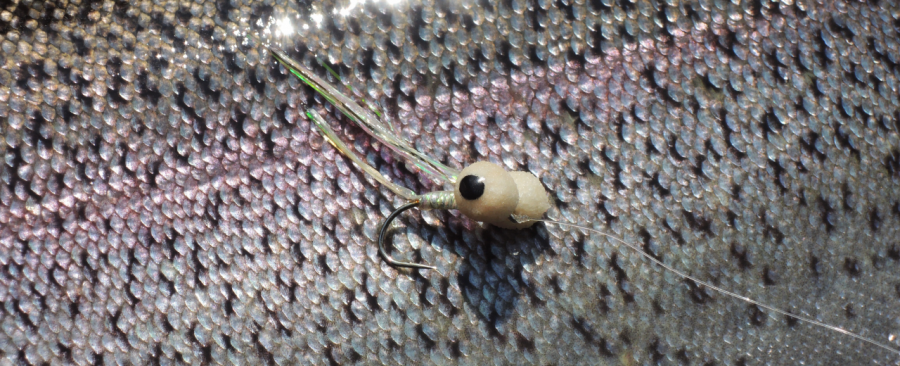
As I already wrote in the introduction, the stillwater fly box must be literally loaded with various types of flies, which on the one hand imitate the natural food of trout from still waters and are mainly represented by the classic categories - dry flies and wet flies, various types of nymphs and streamers, but also those the main task of which is to attract the fish and excite them to take them in case the trout for various reasons overlook smaller and natural-looking types of artificial flies - imitations of insects and aquatic animals.
What is wonderful about stillwater fly fishing and at the same time often very frustrating about water is that when fishing for trout from stagnant waters, you need - depending on the conditions - the vast majority of types of artificial flies that exist and were actually often created because of stillwater fly fishing. Therefore, take into account that if you have only fished on running water so far (all the more so if you only catch French leader - certainly a large part of today's fly fishing population 😅), your arsenal of (not only) artificial flies will have to noticeably increase by specific types patterns that you didn't need to have in the fly boxes until now!
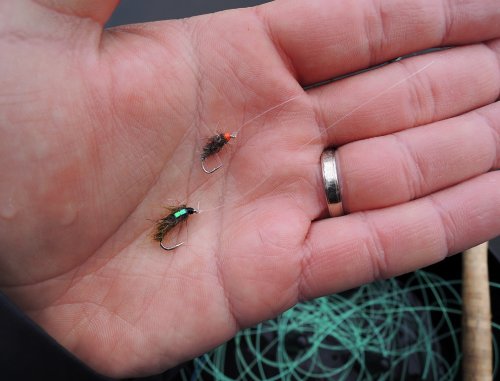
So now there is nothing left but to imagine all those indispensable groups of stillwater flies individually and describe their use in fishing for stocked and native trout inhabiting the mysterious and hunting-addictive depths of still waters! 🤩
I would therefore divide stillwater flies, including a brief description, into 6 basic and most commonly used groups, namely:
➡ Lures - Fantastic, brightly colored and moving attractors provoking the fish to strike.
➡ Nymphs - Imitation of larvae and pupae of aquatic insects, or smaller types of natural lures.
➡ Wet flies - Imitation of drowned and aquatic insects, including fantastic patterns.
➡ Dry flies - Imitations of adults/terrestrial insects + emergers.
➡ Streamers - Larger lures imitating small fish and other smaller aquatic vertebrates.
➡ Special patterns - Modern pseudo-flies derived from new techniques of competitive fly fishing.
So let's break down these individual groups of artificial flies, which are essential for stillwater fly fishing, in detail and document them with concrete and, above all, effective patterns, which should definitely not be missing from your box under any circumstances! 🧐
STILLWATER LURES & ATTRACTORS belong to the all-season and very popular flies among fly anglers - especially for catching freshly stocked fish, which are not used to natural food, but the irritating effect of the lure, which provokes the fish to strike, is important for catching them. That's why stillwater lures come in all kinds of sizes, shapes, colors and movements! Of course, there are naturally tuned lures as well, but I would rather classify them as nymph patterns. I would divide stillwater attractores & lures into basic groups, namely:
◼ Lures with a tail, in which the main moving and irritating element is a soft tail made of marabou feathers or fine fur. Their balance is important - they should fall over the head so that the movement of the tail is irresistible to the fish. They are most effective in the popular and generally most commonly used colors for lake lures: black, orange, yellow, white, pink, red, black-yellow, white-green, yellow-orange, white-red... Among the most famous and popular are of course black-green Montana and its various color variations. The prime time for these lures comes at the beginning of the season, when the water is still very cold and without enough natural food, but the fish are already hungry and aggressively attack anything that moves! Tailed lures are therefore an absolute MUST HAVE in your stillwater fly box!
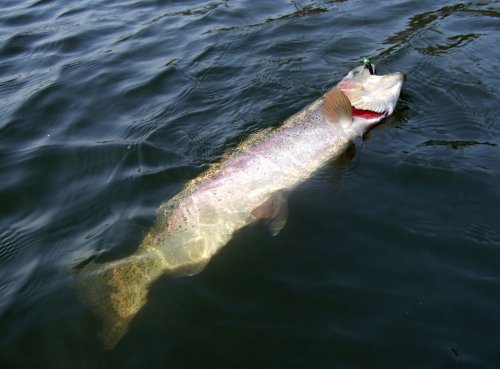
◼ Lures with a wing are usually smaller lures with a short tip and a soft, movable wing made of marabou or fur, formerly made of rooster feathers. They arose (among other things) during the modification of competition rules in the UK, when flies larger than 2.5 cm were not allowed to be used - competitors were forced to tie flies whose body does not exceed this length, but the irritating effect of the longest moving part remains the same - the longer tail was i.e. moved to the level of the wing. Although not quite, because I can say from personal experience that winged lures simply do not work in the same way as tailed lures. Their movement - due to the fact that they are mostly loaded along the entire length of the body - is not so irritating and the attractiveness for fish - in my opinion - decreases.
Among the most famous winged lures are, of course, the traditional Black Chenille, Viva, Cat's Whisker, Clifton, Sweeney Todd, Dawson's Olive, Jack Frost, Leprechaun, Mickey Fin, Whiskey Fly and small mini-lures of the Cormorant type. The colors, as already mentioned patterns suggest, are black-yellow/green, black-pink, white-green, olive, white, green, orange... Due to their effortless and decently attractive movement, they are fished with the greatest efficiency in autumn , winter and early spring months, when the metabolism of the fish slows down, the food in the water decreases, the fish are no longer so aggressive, but on the other hand, they do not disdain a larger and achievable bite. Another group of flies that you should have at least a few basic patterns in your fly box!
◼ Gold-headed lures are the aforementioned irritants that are enriched with a gold or other colored head that increases their attractiveness! It could be said that the head of the fly mainly burdens the fly, the fly + replaces colored elements, which in the above types had to be tied from a different material. These are practically simplified/more modern versions of traditional tailed or winged lures.
Gold-headed lures can be tied using brass beads of different colors, which can then be tied with lead wire, or - nowadays a more comfortable solution - use tungsten beads, which - just like the brass ones - are now produced in a similar range of colors and sizes also in versions without notches for jig hooks. In terms of color variants and use, everything that was written about tailed and winged lures applies! To these lures I would also associate lures with chain eyes (e.g. Humungus type), most often silver and gold in color, which are particularly effective when fishing for large brown trout.
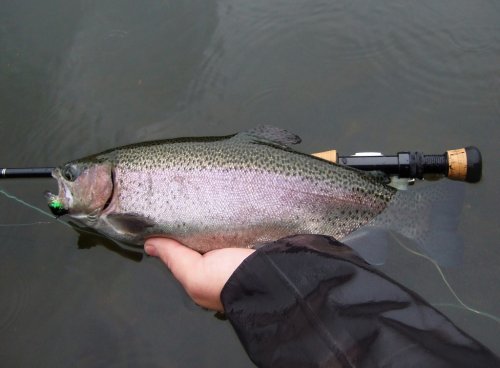
◼ Booby nymphs are very specific tailed or winged lures with large floating eyes, which are mainly found near the bottom and in the column. It could be said that they are actually fished in the opposite way to previous patterns, as weighted winged and tailed lures sink slowly and when animated gradually fall through the water column, while floating Booby nymphs have a constant tendency to rise to the surface while we pull them down (when fishing with the most traditional method with sinking lines). Of the color options, the best options are white, orange, yellow, pink, black, Viva/Montana (black-yellow/green), Cat's Whisker (white-green), Sparkler (glittering imitating small fish). These special lures have been developed mainly for trout fishing near the bottom - spring, autumn, winter - without the risk of stuck at the bottom and frequent tearing of flies. In the summer months - due to the loss of oxygen and the migration of fish to greater depth - their use is even prohibited in some foreign reservoirs, as trout have a tendency to suck these Boobies really deep, which is very often a fatal mistake for trout, after which they die . The use of Booby nymphs has gradually spread to most fishing techniques, but if you like to fish for trout, especially in the cold months of the season, this type of fly is simply a must have in your stillwater fly box!
◼ Blobs belong to the really bizarre, but today already traditional and very effective stillwater flies for stocked, but paradoxically also for native fish! Their fame was mainly ensured by their biggest promoter - the English competitor Iain Barr! Blobs and all their modern equivalents - classic Blobs from Fritz chenille, but also modern variants from Eggstasy and other wicks, etc. belong to one of the youngest stillwater lures. Colored "balls" of different sizes and very easy to connect celebrate success on planted, but often also large indigenous fish. Some anglers theorize that Blobs remind fish of a school of daphnia, but only the fish know the truth! Anyway - (not only) in stillwater fly fishing nowadays, it is no longer so important what the fish sees in the lure, but mainly that it tastes good... And the Blob is a clear proof of that! 😉
Blobs belong - in my opinion - to "flies" that can be used all year round. Originally, they were fished with super-fast pulling with the Roly-Poly technique on a sinking line, but gradually Blobs hit - just like Booby nymphs - most of the stillwater techniques, which I write about in more detail in the related article "Tactics & Techniques For Stillwater Trout". Today, blobs are also tied as golden-headed versions, floating Booby variants with big eyes or the so-called FAB with a polycelon tip, with a longer tail, wing or rubber legs - there are really many variants! And even if you don't like Blobs as "artificial flies", definitely have a few in the basic colors - orange, sunburst, pink, Viva (black-yellow/green), Coctail (orange-yellow) - in your lake box flies!
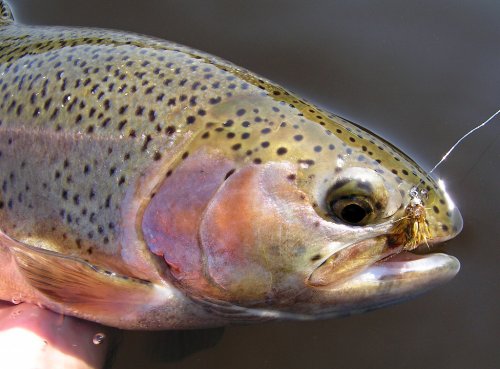
STILLWATER NYMPH PATTERNS: Nymphs are another very numerous group of artificial flies used in stillwater trout fishing, both wild and stocked! Their main goal is to imitate the natural food of trout in the form of larval stages and pupae of insects, but also other small aquatic invertebrates that inhabit stagnant waters! For native fish, fishing with nymphs has its own logical justification, for stocked fish, which do not know these small organisms and do not even have much time to get to know them more closely, we do not find much logic in fishing with nymphs! But still, nymphs are one of the most essential groups of artificial flies for fishing all kinds of trout on still waters!
I would therefore divide stillwater nymphs into the following groups, which are most often used in water:
◼ Midges & Buzzers are probably among the most frequently used types of nymph and at the same time specific stillwater flies, because during river fly fishing imitations of midge larvae and pupae are not normally used very much. It is probably the most commonly used type of stillwater nymphs even on all still waters - in Czech Republic as well, which is quite a paradox, because on domestic still waters for trout there is never any massive hatching/occurrence of midges, and if there is always a large cast of carp as part of the trout cast, it never takes place it won't! Fishing with midge/buzzer patterns is mainly associated with clean lakes with a slightly muddy bottom, where buzzers have ideal conditions for life and thus make up the majority of the trout's diet. Despite all the above (il)logic, small and slender nymphs imitating midge pupae, are tasty to both wild and stocked fish! That is why it is necessary to have these special stillwater nymphs in you fly box - ideally in black, olive, red, but also some fluo color or with distinctive elements - ribbing, cheeks, back, tip. It can be said that they act as miniature decoys for stocked fish! A special branch is the so-called epoxy buzzers- completely covered in epoxy resin or UV glue - another endemic in the realm of artificial flies, which is good to have in your stillwater fly box!
◼ Diawl Bachs are another type of specific stillwater nymphs with no potential for river use. They are very simple, but very effective indeterminate nymph patterns, the basis of which is a solid stillwater wet hook, rooster feather rays for tip and legs + a body made of peacock rays ribbed with wire or tinsel. Finally, a black or, on the contrary, a very distinctive fluo head and a deadly stillwater nymph is born! Such a type of fly can imitate everything from mayfly nymphs, midges, small fry, corixas, etc., but what the fish see in Diawl Bachs, we will probably never find out! One thing is for sure, these are MUST HAVE stillwater nymphs that you should definitely not miss!
◼ PTN Pheasant tail nymphs are another indeterminate, but very versatile and highly effective type of stillwater (and river) nymphs for catching wild and stocked trout! Timeless and still excellently functioning small nymphs tied from the rays of a pheasant tail imitate the larvae of insects and small aquatic animals - the larvae of mayflies, stoneflies, midge pupae, small fish, tadpoles and probably also hoglouse or freshwater shrimps - it only depends on their size and the concept of color and accessories . In their natural tuning, these indeterminate nymphs are excellent when fishing stillwater brown trout. If we enrich them with e.g. a colored chest, a shiny back or a colored head, they again become small lures, excellent for rainbow and brook trout fishing! Pheasant tail nymphs are another type of nymph that shouldn't be missing from your stillwater fly box, in all varieties, sizes and loads!
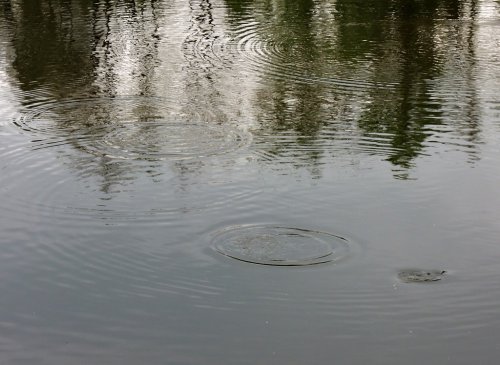
◼ HE Hare's Ears are probably the most popular type of stillwater nymphs for me. Especially those really vague and small tangled bits that are particularly effective when finessing apathetic or hooked fish or big and experienced fish! Personally, I believe that in stillwater fishing, the main strength is in the visual indeterminacy of the fly! Once you fish too specific, neat and symmetrical patterns, you will never have as much success as you would with flies that feel much more natural to the fish. Of course, I struggle with this myself, because I tend to create perfect flies at the vise, but in the end I always wake up and disrupt the "perfection" of the flies by brutally brushing with the velcro, which I also carry on my fly fishing lanyard. Hare's Ears - tied from the rough fur of a hare mask make great stillwater nymphs - especially when combed thickly and in natural, olive, black, brown! My favorite option - for both wild and stocked trout - is a natural rabbit ear ribbed with mother-of-pearl, a thicker chest and either a black or fluo orange head! If you like to hunt for small indeterminate nymphs imitating e.g. pupae of midges, sedges, mayflies or chrimps and hoglouse, you should never miss the Hare's Ears in your fly box!
◼ Crunchers represent a kind of hybrid between PTN, Diawl Bachs and Hare's Ears! This is a favorite in the UK very famous nymph of the already mentioned Iain Barr, which combines all the elements from the above mentioned nymph types! Heavy stillwater wet hook, rooster feather rays, ribbed pheasant tail body and wing germs, peacock ray or hare dubbing chest, hen or rooster feather rays leg wreath and small head. Cruncher is a pattern that exists in many size, color and material modifications! Anyway, this is a very effective nymph pattern - definitely keep a few variations in your stillwater fly box!
◼ Bloodworms imitate distinctive red and relatively large midge larvae. Their imitations are particularly effective in waters where they are abundant. Bloodworms live in the soft muddy bottom and are hearty food for trout. Among the most famous fly patterns are either imitations of individual snaps - simple "worm" patterns strung from red bodyglass, or just thread and red marabou feathers, or their "tufts", which are known as App's Bloodworms or Norther Spider Bloodworm, which are strung from more Flexi Floss fibers and a body made of glass beads or distinctive threads. A great type of nymph for places where fish feed on bloodworms, or as a distinctive "nymph irritant".
◼ Damsel nymphs & Dragonfly larvae are, from my point of view and in today's understanding (orange/chartreuse head, blue tinsels, etc.) rather simple olive lures - especially if they are not tied as faithful imitations of these large predatory larvae! Of course, if you are fishing in waters where there are a lot of damsels and dragonflies and trout eat them, their use has a clear justification - especially in the summer!
Unfortunately, nowadays, when there are more stocked non-native trout in our waters than native ones, the main fly-fishing principle - with regard to imitating the currently occurring natural trout food - has basically disappeared, and that is why today, for example, the remaining native or surviving old fish for complete nonsense, or, on the contrary, we play big stillwater connoisseurs when we fish for freshly stocked and totally confused rainbows for natural imitations of something that those trout have never seen in their lives... But this is probably part of the much-needed and unstoppable development, which also affects nature walks and, of course, our beautiful hobby of fishing! 😒
◼ Shrimps, Hoglouse & Corixas are probably the last important group of stillwater nymph flies, especially when fishing on natural still waters! Freshwater shrimps, hoglouse, and corixas are relatively large aquatic invertebrates, and wherever they are found, they will play an important role in the diet of the trout there! Imitating them is relatively simple - for shrimps and hoglouse, you can also use, for example, a natural and more combed type of Czech nymph, imitations of swimming floats are relatively easy to tie, so keep at least one type of fly in your box - you will definitely find room for a few similar natural patterns and as soon as you find yourself in a situation where they are needed - you will see how you will appreciate their presence in the box! 😉
◼ Special stillwater nymphs are a category of specific large and heavily weighted nymphs/lures that are used in stillwater fishing mainly to stalk large trout living in really clear water (Avington, Dever Springs, etc.). These nymphs, or Stalking Bugs (the most famous Lead Bug, WAEF, Holographic Bug, Alley Cat, Firebird) are also often brightly colored so that they are clearly visible when fishing "on eye" - as soon as they disappear in the trout's mouth, the hunter is hooking the fish! Unfortunately, in our conditions, such nymphs are only used for stalking large carp that are basking under the surface, because I do not know of any area in the Czech Republic that is at least remotely similar to clean English "stalking" small still waters, where it is possible to actively track and deceive and conquer large "double-figure" rainbows!
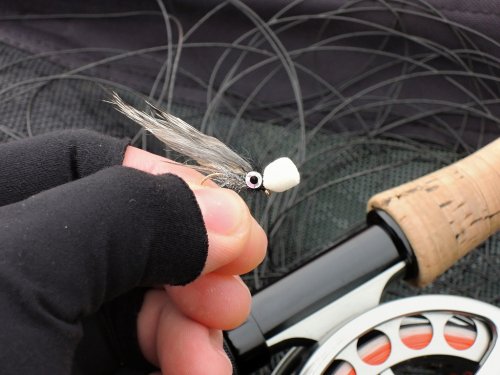
STILLWATER WET FLIES: Another very popular category of stillwater flies are wet flies, which - in the form of fishing on stagnant water - we know mainly in the form of the so-called Palmers! Of course, it is possible to fish with great success on traditional wet flies commonly used in river fly fishing, such as Coachman, March Brown, Greenwells Glory, Butcher, Black & Blae or various types of spiders Partridge & Orange etc. But palmers are the typical wet flies used in stillwater trout fishing! The main types of wet palmers certainly include the traditional black and red Bibio and Black Zulu with a distinctive red tip, then the orange Soldier Palmer or Carrot Fly, the naturally tuned Stick Fly with a peacock body and a distinctive green tip, the black and brown Kate McLaren with yellow bristles, the brown-orange Greenadier Palmer or the all-black Black Pannel with distinctive crests from the golden pheasant collar!
Other stillwater wet flies originating from the British Isles are "winged" traditional patterns such as Dunkeled, Invicta, Mallard & Claret, Sooty Olive, Teal Blue & Silver, Wickham's Fancy, English Alexandra or densely tied Dabblers, which imitate smaller fish or large wet mayflies, but in our conditions they do not have much use, as they are mainly "old" flies that were developed for fishing natural brown trout in their lakes and sea form on large Irish and Scottish "Lochs". Such conditions are not really found in the territory of the Czech Republic, although of course it does not mean that the fish in our conditions will completely ignore them! 😉
The main purpose of wet flies is to imitate drowned insects that float or sink in the water column! However, they often fish again on brightly colored wet flies actively pulled, e.g. on an intermediate line, it can be said that - just like some groups of nymphs - wet flies can represent rather minor irritants for fish! Either way, be sure to load up your stillwater fly box with plenty of wet flies of various colors and sizes, as you will definitely need them for stillwater fly fishing!
DRY FLIES & EMERGERS: Adult imitations of aquatic and terrestrial insects can also be used in stillwater fly fishing! Especially at a time when the fish are feeding from the surface and do not respond to other types of flies, or are already heavily hooked, the water is under a lot of fishing pressure and the fish only accept really small and casual types of flies! In case you don't have dry flies or emergers imitations, it may happen that you will be a little extra on the water in such cases! 😅 Among the typical (semi) dry stillwater flies are the so-called Shuttlecocks, which represent an adult midge, sedge or mayfly just hatching from the pupa! These are very effective flies at the moment when fish is feeding on insect from the surface, but reject classic dry flies - sedges, mayflies, etc. Shuttlecocks gain their trust mainly because they are submerged under the surface (the shell of the chrysalis) and the rest of the fly - a thick sheaf CDC feathers, a roll of polycelon or a bundle of deer fur - it sticks out above the surface and imitates a hatching adult! The color of the body (natural, black, orange, olive, claret) is not as important as the natural suspension of the fly in the water blank! Shuttlecocks are clearly among the TOP dry lake flies that you must not miss!
Other dry flies that you can use with great success when fishing on stagnant water include dry patterns of various sized caddisflies, mayflies, midge adults (Griffits Gnat, Black Gnat) as well as imitations of Terrestrials - beetles, grasshoppers, damesels and winged ants and bibios - which are especially effective in summer fishing on lakes with lush coastal vegetation! Therefore, keep a few larger and well-floating imitations of terrestrial insects in your fly box - sometimes such flies will surprise even on a private stand, when the fish reject everything else! In addition - the end of summer is marked by large crane flies, and if they start to hatch, trout can go after them! 🤩
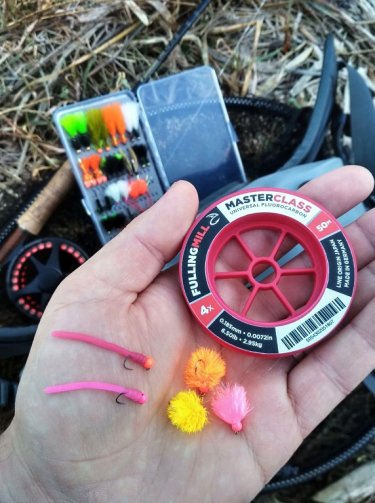
SMALL FISH STREAMERS: We're moving from smaller stillwater flies to larger ones designed for catching more aggressive and larger brown and rainbow trout! In general, trout streamers are imitations of smaller fish or other aquatic vertebrates that fall prey to hungry trout! By the term streamer, we also mean universal larger lures, which do not have to imitate anything specific, but for a large trout they mean a provocateur, an intruder in his space or a hearty bite! So I would include in this category mainly Zonkers of various sizes and colors, the popular and very versatile Wooly Buggers, dark imitations of tadpoles and leeches, imitations of minnows and fry, special floating subsurface "Suspender" streamers, Muddlers, long or multi-piece Snakes, Sparklers, Booby streamers etc. Remember big bait = big fish! Of course, this is not a dogma, but often a larger fly can work wonders in situations where you have tried all possible small patterns and fishing techniques without success! Therefore, examine the special box and fill it with the above-mentioned patterns of medium-sized streamer flies, because they will certainly come in handy, especially in the autumn but also in the spring!
SPECIAL STILLWATER FLIES: This is a category whose existence certainly does not make me happy, but when I write I always try to treat the given topic as comprehensively as possible, so let's go to this section of lures as well. It could be said that the greatest contribution to the creation of this group of "stillwater flies" is played by competitive fly fishing, which in the long term has a major influence on the development of modern fly fishing... But I always say that development does not always mean moving forward, and especially not only in a positive way sense! Specifically, for example, the method called BUNG (Fishing with an indicator or "Fly = Float") made it possible to fish statically on stagnant waters with practically everything you can think of! Today, you can hang weighted Squirmy Wormy, Blobs, Eggs (colored balls made of special chenilles), MOP Flies, Chewing Gum Worms, lures on a jig hook with tungsten beads, Chamois Flies (long "worms" made of fine chamois), but of course also ordinary river tungsten jigs and nymphs... It could be said that even Czech nymphs would re-discover the light of the fly fishing world with this method!
Of course, I am sometimes "forced" to fish with an indicator on the still water, I don't deny that! But I see a problem in what anglers hang under the indicator, and mainly in the effect of this method on the destruction of stillwater fly fishing as such - just as fishing with a French leader had in river fly fishing. And I mean it in the sense that, just like on the river today, we see the vast majority of fly fishermen only nymphing with simple tungsten patterns without using a fly line, so I am starting to notice more and more the increase of the so-called "BUNG anglers" on the stillwater without first trying to fish with traditional fly fishing methods! 😔
Therefore, I would be very happy if my FLY FISHING SPECIAL focused on stillwater fly fishing would help all its fly fishing readers to realize the main principles of this exceptional and beautiful fly fishing industry! ✊
🔥 If you don't tie your own flies or if you don't want to choose from our extensive range of individual stillwater flies, I have again prepared a unique fly selections for you full of original and highly effective stillwater flies, with which you will definitely score for trout from stagnant waters:
◼ Stillwater General Purpose Flies - Fly Selection ◼ TOP Stillwater Buzzers - Fly Selection
◼ TOP AR Trout Flies For Small Stillwaters - Fly Selection ◼ Dry-Dropper BUNG Stillwater Flies - Fly Selection
◼ MUST HAVE Lures For Stillwater Trout - Fly Selection ◼ TOP AR Trout Flies For Clear Stillwaters - Fly Selection
⭐ Even though the topic of lake flies is very vast, it certainly does not mean that reading this article and filling your stillwater fly box with all the fly patterns described above will be enough for you on the shore of the trout stand! I warmly recommend you to continue your studies and read other articles from my FLY FISHING SPECIAL, in which I go into detail about all the important aspects of fly fishing on trout still waters:
➡ STILLWATER FLY FISHING FROM A TO Z
➡ TACTICS & TECHNIQUES FOR STILLWATER TROUT
➡ TACKLE & EQUIPMENT OF STILLWATER FLY FISHERMAN








































